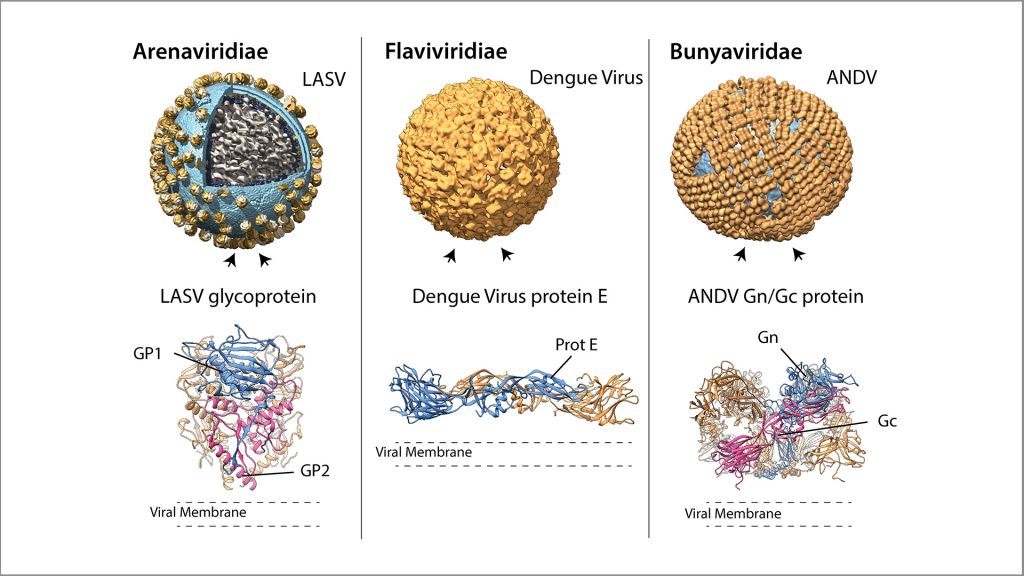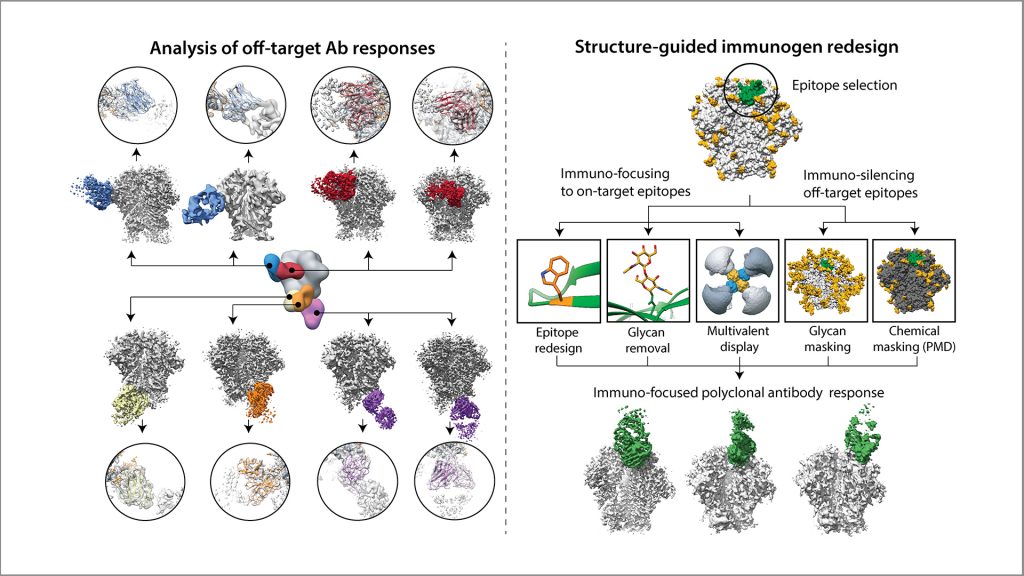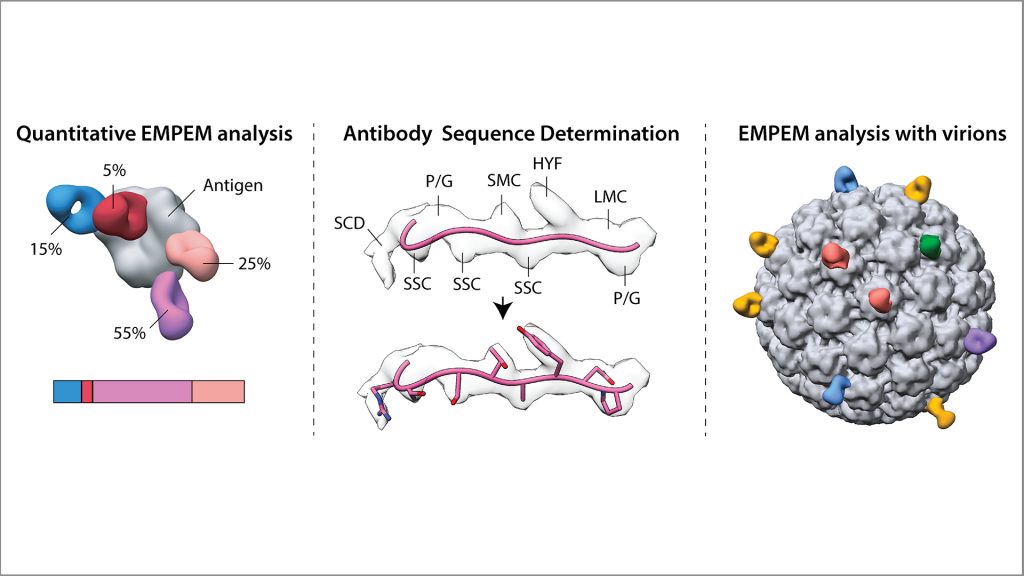One of the major research directions in the lab will be focused on emerging viruses lacking vaccine or therapeutic solutions (e.g., enteroviruses, flaviviruses, bunyaviruses). These RNA-based viruses can be highly pathogenic and are a major threat to global health. They can inflict severe disease with symptoms that include hemorrhagic fever and in some cases, encephalitis. Case fatality rates of up to ~30-40% have been observed for certain subtypes of arenavirus and bunyavirus. Additionally, viruses like Rift Valley fever readily infect domesticated animals bringing significant damage to agriculture. Because of the increasing global temperatures and resulting animal migrations, many of these viruses are expanding the geographical ranges at which they circulate.
Introduction of novel engineered protein subunit reagents, antigenic probes and methods for evaluation of elicited immune response would provide the necessary resources for drug and vaccine design efforts in these fields. The ultimate long-term goal is to discover antibodies and vaccine candidates that will one day contribute to human health.
Key publications:
- Antanasijevic A, Schulze AJ, Reddy VS, Ward AB. High-resolution structural analysis of enterovirus-reactive polyclonal antibodies in complex with whole virions. Submitted, bioRxiv preprint available: https://doi.org/10.1101/2022.01.31.478566
- Brouwer PJM, Antanasijevic A, Ronk AJ, Muller-Krauter H, Watanabe Y, Claireaux M, LLoyd NM, Bijl TPL, Perrett HR, Steijaert T, Burger JA, van Haaren MM, Sliepen K, van Gils MJ, Crispin M, Strecker T, Bukreyev A, Ward AB, Sanders RW, Lassa virus glycoprotein nanoparticles elicit a neutralizing antibody that defines a new site of vulnerability. Submitter, bioRxiv preprint available: https://www.biorxiv.org/content/10.1101/2022.03.28.486091v1

Immunodominance is a phenomenon originating from unequal immunogenicity between different antigens or different epitopes within the same antigen. This has been a topic of major interest in the HIV and influenza vaccine design fields, where the goal is to elicit antibody responses against highly conserved epitopes in order to counter the strong antigenic drift and induce broad protection. Instead, the bulk of the antibody response elicited by traditional (and certain engineered) HIV and influenza immunogens tends to be strain specific. While a lot is known about the main immunological factors behind epitope immunodominance, the contributions from different structural factors in complex antigens have been significantly more challenging to delineate.
In the lab we will apply advanced structural and computational biology tools to evaluate how structural factors (such as antigen presentation/orientation, epitope location, glycan shielding, amino-acid composition, conformational heterogeneity etc.) contribute to epitope immunodominance in complex viral antigens. In other words, we will attempt to understand what makes a highly-immunogenic epitope vs a poorly-immunogenic one. These data will then be applied to engineer novel vaccine candidates against different viral pathogens (e.g., HIV, enteroviruses, flaviviruses) capable of immuno-focusing the antibody response onto the preferred (e.g., cross-reactive) epitopes.
The ultimate goal is to harvest the structural immunogenicity data and create algorithms for modeling antigenic landscapes in different immunogens. This will facilitate the design and evaluation of vaccine candidates and reduce the number of animals used for pre-clinical testing.

Electron microscopy (EM) plays a critical role in most current research efforts focusing on the design of vaccine and therapeutic solutions against different diseases. This versatile method enables structural characterization of biomolecular assemblies ranging in size from small recombinant proteins (~nm scale) to whole viral and microbial pathogens (~µm scale); thus allowing to study pathogen assembly and life cycle, structures of individual antigens, molecular details of receptor recognition and mechanisms of neutralization by antibodies and small molecules. Importantly, there is no requirement for high sample homogeneity, and EM can be applied to compositionally or conformationally heterogeneous samples. During my postdoc in Andrew Ward’s lab we exploited this property of EM and developed a method for rapid structural characterization of polyclonal antibody (pAbs) responses elicited by an infection or immunization – cryoEM-based polyclonal epitope mapping (cryoEMPEM; see publications below).
We will continue to exploit the versatility of EM and develop novel methods to aid vaccine design and antibody discovery. The primary topics that will be pursued are:
- Qualitative and quantitative analyses of vaccine-elicited antibody responses using EM
- EM-based antibody discovery (i.e., sequencing antibodies from structural data)
- Extending cryoEMPEM applicability to complex antigenic targets (e.g., whole virions, toxins, bacteria etc.).
Key publications:
- Antanasijevic A, Sewall LM, Cottrell CA, Carnathan DG, Jimenez LE, Ngo JT, Silverman JB, Groschel B, Georgeson E, Bhiman J, Bastidas R, LaBranche C, Allen JD, Copps J, Perrett HR, Rantalainen K, Cannac F, Yang YR, Torrents de la Pena A, Rocha RF, Berndsen ZT, Baker D, King NP, Sanders RW, Moore JP, Crotty S, Crispin M, Montefiori DC, Burton DR, Schief WR, Silvestri G, Ward AB. Polyclonal antibody responses to HIV Env immunogens resolved using cryoEM. Nat Commun. 2021, 12(1):4817.
- Antanasijevic A#, Bowman CA#, Kirchdoerfer RN, Cottrell CA, Ozorowski G, Upadhyay AA, Cirelli KM, Carnathan DG, Enemuo CA, Sewall LM, Nogal B, Zhao F, Groschel B, Schief WR, Sok D, Silvestri G, Crotty S, Bosinger SE, Ward AB, From structure to sequence: Antibody discovery using cryoEM. Sci Adv. 2022, 8(3):eabk2039.
